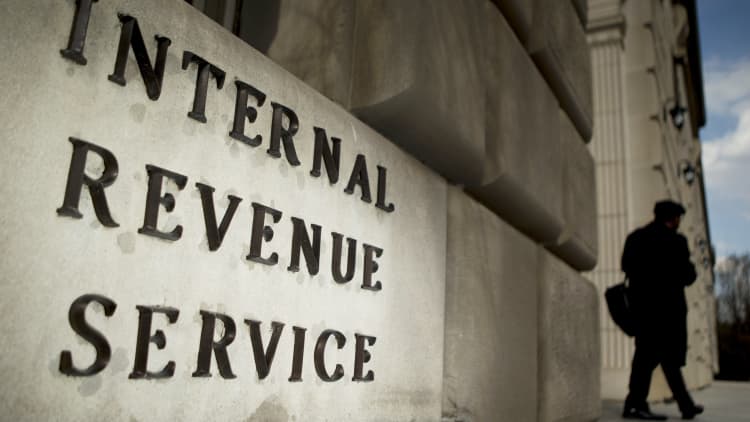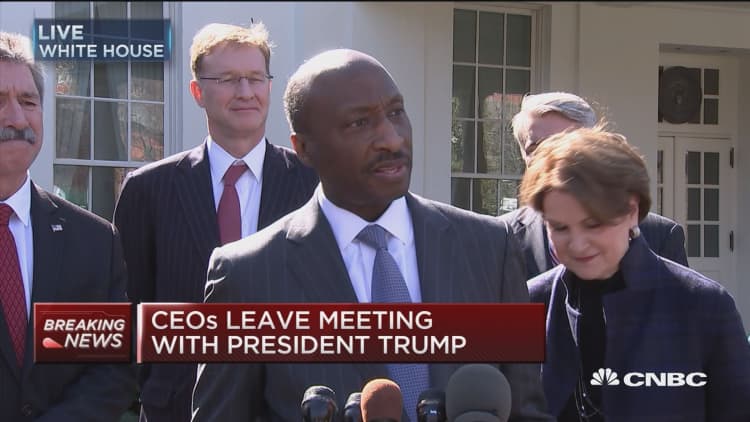
Paying for President Trump's "phenomenal" tax plan could require an equally phenomenal rate of economic growth that experts say may not be possible.
In a Thursday interview with CNBC's "Squawk Box," Treasury Secretary Steven Mnuchin said the White House expects a combination of tax reform and regulatory rollbacks to unleash substantially higher economic growth, filling government coffers and offsetting the cost of lower taxes. Mnuchin forecast that the economy will expand at a rate of at least 3 percent by the end of next year — more than a percentage point faster than its current pace.
"We think we're going to create significant amounts of growth and that's going to create jobs, create tax revenues," Mnuchin said on Squawk Box. "That's going to stimulate the economy."
The kinds of things they're talking about should have dynamic effects. Big or small? Depends on the model.Roberton Williamsfellow, Urban-Brookings Tax Policy Center
Mnuchin emphasized the administration's support for "dynamic scoring," which factors the impact a policy has on the economy into the calculations of its cost. And he acknowledged that the White House is likely adopting a rosier outlook for the economy than either the Congressional Budget Office or the Joint Committee on Taxation.
"My guess is that our growth assumptions will be higher than what they use to score the plan," he said.
Both the CBO and JCT already use dynamic scoring for major legislation. A 2015 report, for instance, put the cost of repealing the Affordable Care Act at $353 billion over a decade using traditional accounting methods, but at just $137 billion under dynamic scoring. Mnuchin suggested that the administration's scoring models will produce a palatable pricetag for Trump's tax proposals.
"The kinds of things they're talking about should have dynamic effects," said Roberton Williams, a fellow at the Urban-Brookings Tax Policy Center. "Big or small? Depends on the model."
But can it be done?
Many economists have questioned whether Mnuchin's target of 3 percent growth is achievable and sustainable, given the shrinking of the U.S. labor force. And even if the economy does speed up, it's unclear that 3 percent growth would be enough to pay for the dramatic reductions in corporate and personal tax rates proposed by Trump during the campaign, or by House Republicans since the election.
Trump repeatedly suggested before the election that growth could hit as much as 6 percent. His campaign's own analysis of his economic proposals assumed that growth would reach 4 percent. Mnuchin walked back that number in an interview with CNBC in November, shortly after his nomination, citing 3 to 4 percent growth.
On Thursday, Mnuchin promised only 3 percent growth or higher.
Republicans have been hoping to pass tax reform using the budget reconciliation process, which would only require only a simple majority of senators to approve it. However, that also means the tax cuts would not be able to add to the deficit in the long term.
A conservative analysis by the Tax Foundation of the plan Trump proposed during the campaign estimated it would cost $2.6 trillion over the next decade, even after accounting for improved economic growth. A dynamic evaluation by the Tax Policy Center projected the price tag would hit $21 trillion by 2036.
"There's a big difference between dynamic scoring and directed scoring," said Jason Furman, a senior fellow at the Peterson Institute for International Economics who was former President Obama's chief economist. "They started with a growth rate and asserted they could achieve it."


